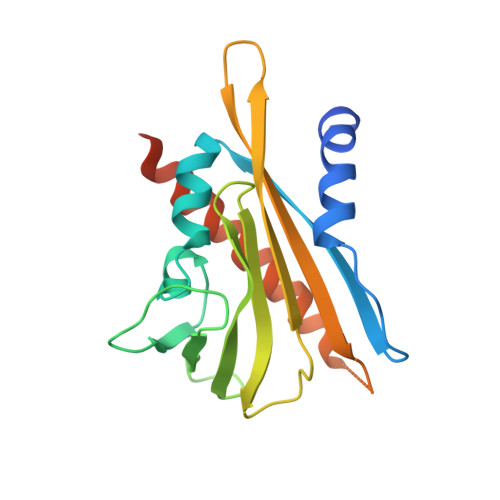Structural basis for selective activation of ABA receptors.
Peterson, F.C., Burgie, E.S., Park, S.Y., Jensen, D.R., Weiner, J.J., Bingman, C.A., Chang, C.E., Cutler, S.R., Phillips, G.N., Volkman, B.F.(2010) Nat Struct Mol Biol 17: 1109-1113
- PubMed: 20729860
- DOI: https://doi.org/10.1038/nsmb.1898
- Primary Citation of Related Structures:
3NJ0, 3NJ1, 3NJO - PubMed Abstract:
Changing environmental conditions and lessening fresh water supplies have sparked intense interest in understanding and manipulating abscisic acid (ABA) signaling, which controls adaptive responses to drought and other abiotic stressors. We recently discovered a selective ABA agonist, pyrabactin, and used it to discover its primary target PYR1, the founding member of the PYR/PYL family of soluble ABA receptors. To understand pyrabactin's selectivity, we have taken a combined structural, chemical and genetic approach. We show that subtle differences between receptor binding pockets control ligand orientation between productive and nonproductive modes. Nonproductive binding occurs without gate closure and prevents receptor activation. Observations in solution show that these orientations are in rapid equilibrium that can be shifted by mutations to control maximal agonist activity. Our results provide a robust framework for the design of new agonists and reveal a new mechanism for agonist selectivity.
- Department of Biochemistry and Center for Eukaryotic Structural Genomics, Medical College of Wisconsin, Milwaukee, Wisconsin, USA.
Organizational Affiliation:





















